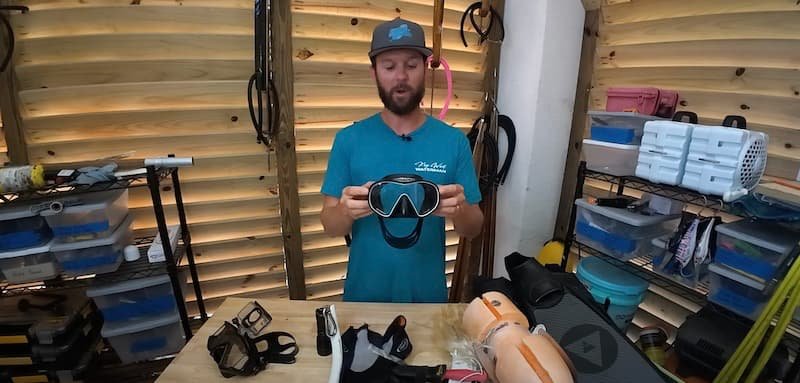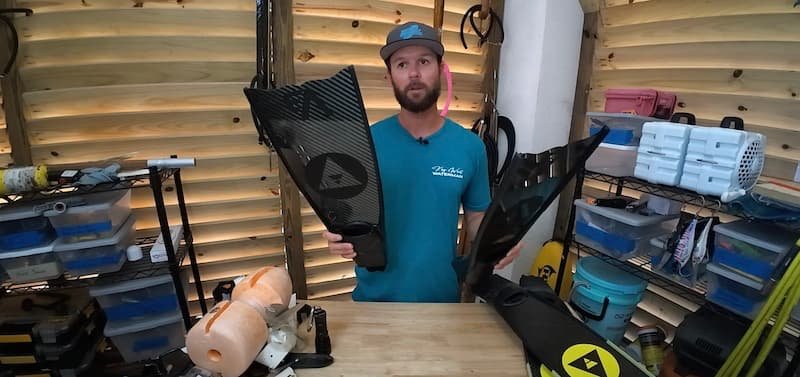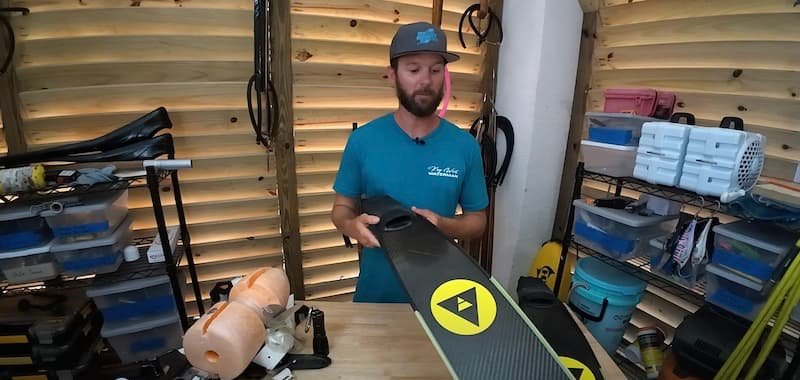
 Roni Essex
Freediver, Spearo, Creator
Roni Essex
Freediver, Spearo, Creator

 Roni Essex
Freediver, Spearo, Creator
Roni Essex
Freediver, Spearo, Creator
In the spearfishing community, gear plays a pivotal role in enhancing the overall experience and performance in the water. In a recent video by Aaron Young, also known as Key West Waterman, he walks us through his spearfishing dive bag, revealing the trusted gear that he’s been using for years. Aaron’s recommendations stem from his extensive experience as both a spearfishing guide and a content creator, offering valuable insights for beginners and seasoned divers alike. Among the various gear, Aaron highlights two pairs of Alchemy fins that he swears by: the Alchemy V3 and V3 Pro. These fins deserve a deeper look for anyone serious about improving their freediving and spearfishing game.
Aaron kicks off his video by discussing the basics—masks, snorkels, and dive socks. When it comes to masks, he uses the Scuba Pro Solo, a scuba mask he’s been diving with since he was 18. It fits his face perfectly and prevents the headaches he experiences with other free-diving masks. He also has a second mask, the Go Mask Panorama, with a built-in mount for filming. Aaron’s snorkel of choice is a SoFlow Silicone Snorkel. He prefers it over harder versions because it's flexible and doesn’t break easily.
For dive socks, Aaron uses Argos Dive Socks, thin enough to work with freediving fins but tough enough to provide durability. He stresses the importance of using socks, especially for freediving, instead of scuba booties, which are bulkier and less suitable for the sleek foot pockets of freediving fins.

Safety and functionality are crucial underwater. Aaron relies on Dyneema Gloves from Neptonics for protection and grip during both spearfishing and lobstering. The gloves are cut-resistant and offer a rubber coating for better handling of equipment.
When it comes to seeing in darker environments, Aaron’s go-to light is the Neptonics Dive Light, which offers 860 lumens and the flexibility to use either AAA batteries or rechargeable ones. Its twist-on design ensures that the light doesn’t accidentally turn on during transport, preserving battery life for when it’s most needed.
For dive knives, Aaron prefers two options: the Koah Spearfishing Dive Knife and the Red Tide Dive Knife, both known for their sharpness and dual-purpose functionality. While Aaron uses these knives to dispatch fish and cut through ropes in emergencies, the Red Tide Dive Knife stands out with its double-serrated edge, adding an extra layer of versatility.

Now for the real stars of the show—Aaron’s Alchemy fins. These carbon fins are a staple for both casual and serious spearfishers, and Aaron makes a clear distinction between the two models he uses: the Alchemy V3 Pro and the Alchemy V3.
The Alchemy V3 Pro is Aaron’s go-to for inshore diving and shallow water spearfishing. Whether he’s maneuvering through mangroves or lobstering, the V3 Pros excel in these environments. Aaron’s choice of foot pockets is the Pathos Pockets with a 23° angle, offering comfort and efficiency. He emphasizes that while some people prefer the 30° angle, he finds the 23° to be the best for his diving style, particularly because of the fit and flexibility of the pockets.
The Alchemy V3 Pro fins are medium-soft, making them versatile enough for a range of diving conditions. According to Aaron, these fins strike the right balance between stiffness and flexibility, allowing him to make powerful kicks without overexerting himself. The carbon blades are lightweight, adding to the ease of use during extended dives.
For more specialized diving, especially deeper and more technical freediving, Aaron switches to his Alchemy V3 fins. These fins are slightly longer than the V3 Pro, making them ideal for up-and-down diving. The extra length allows for more efficient energy transfer during deeper dives, giving divers the propulsion needed to return to the surface with minimal effort.
Despite the technical differences between the V3 and V3 Pro, Aaron points out that for most people, the differences will be subtle. However, for someone like him—who dives both inshore and offshore, shallow and deep—having both pairs of fins allows for maximum versatility. He notes that his Alchemy S fins, while not shown in the video, also have a place in his dive bag for certain conditions, but the V3 and V3 Pro cover the majority of his needs.

Aaron strongly recommends carbon fins for those who are serious about improving their freediving skills. While they come at a higher price point compared to plastic fins, the performance gains can be significant. Carbon fins are more responsive and lightweight, which reduces leg fatigue during long dives. This is especially important for spearfishing, where energy conservation can make or break a hunt.
That said, Aaron doesn’t dismiss the value of plastic fins for beginners. He acknowledges that carbon fins may not be necessary for everyone, especially if you’re just getting into the sport. Plastic fins can still do the job, especially in shallow waters. But if you’re looking to dive deeper and increase your efficiency underwater, carbon fins like the Alchemy V3 or V3 Pro are worth the investment.

Aaron Young’s dive bag is a reflection of years of experience and fine-tuning. From masks and snorkels to gloves and dive lights, every piece of equipment serves a specific purpose, ensuring that he can perform at his best in the water. His love for Alchemy fins, in particular, stands out as a testament to their quality and performance. Whether you’re just starting out or looking to upgrade your gear, Aaron’s advice offers a practical guide for assembling a reliable spearfishing setup. And if you’re serious about freediving, investing in a pair of carbon fins might just be the game-changer you’re looking for.